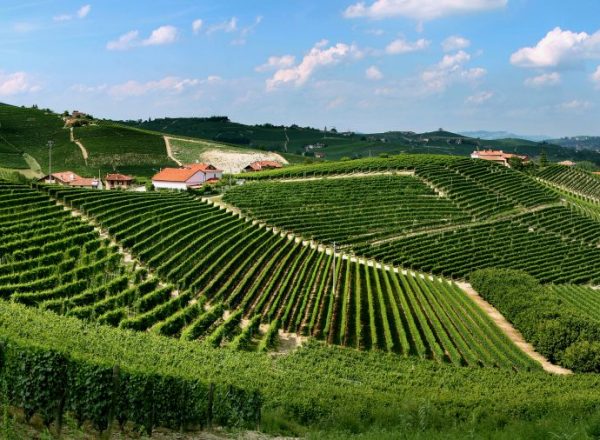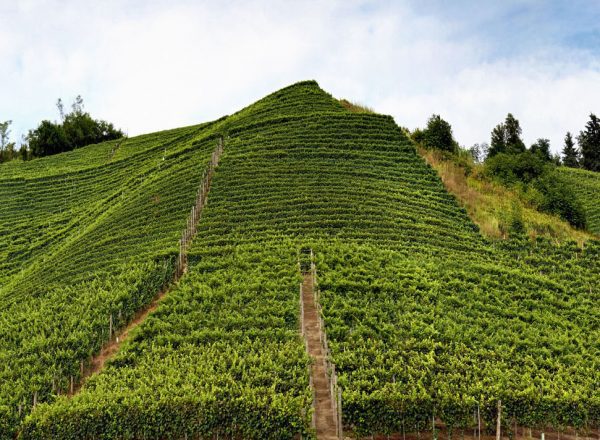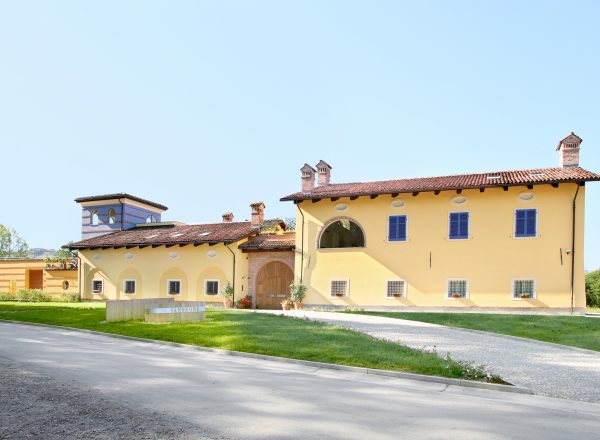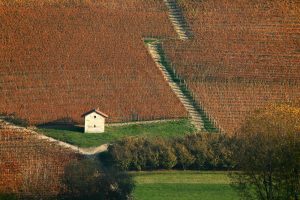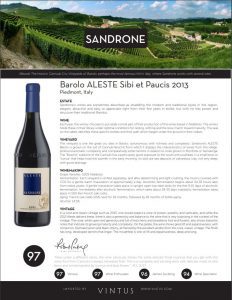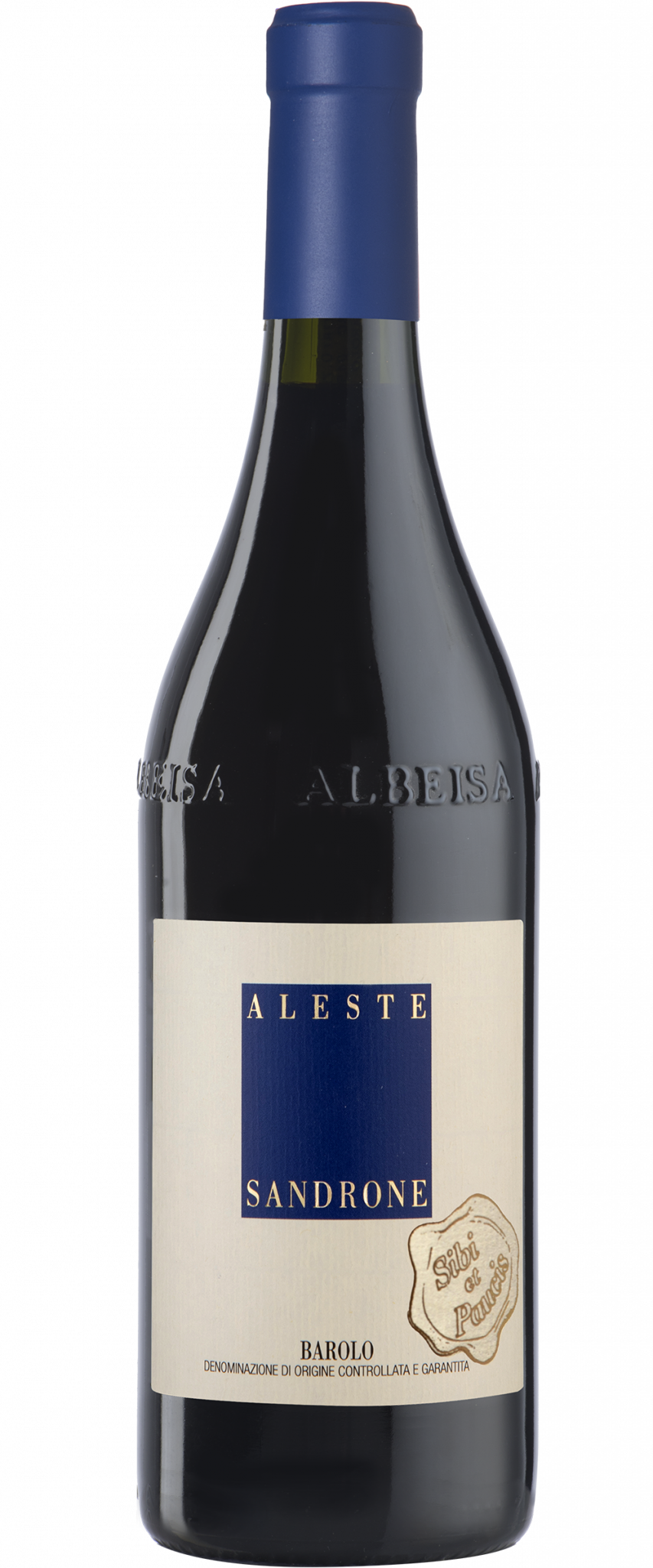
Sandrone
ALESTE Barolo 'Sibi et Paucis' 2013
Barolo
Each year, the winery chooses to put aside a small part of their production of the wines based in Nebbiolo. The winery holds these in their library under optimal conditions for resting, refining and the slow march toward maturity. The seal on the labels identifies these specific bottles and their path which began under the ground in their cellars.
ALESTE is the natural continuity of Luciano’s first wine, the Barolo Cannubi Boschis, which garnered Luciano his early acclaim with the international trade and press. Giving all the experience, knowledge, patience and passion of his many harvests, Luciano pays tribute, with boldness and sensibility, to the next family generation: “ALESTE” is in fact the combination of the names of his grandchildren ALEssia and STEfano.
This single-vineyard wine is typically dense and concentrated but shows incredible harmony and balance. The medium-weight structure shows delightful and seductive notes of berries and cherries, with floral and mineral aspects. In great vintages, properly cellared examples will drink well for 20+ years. The finish is sweet and broad, with moderate, ripe tannins and long length.
VINEYARD
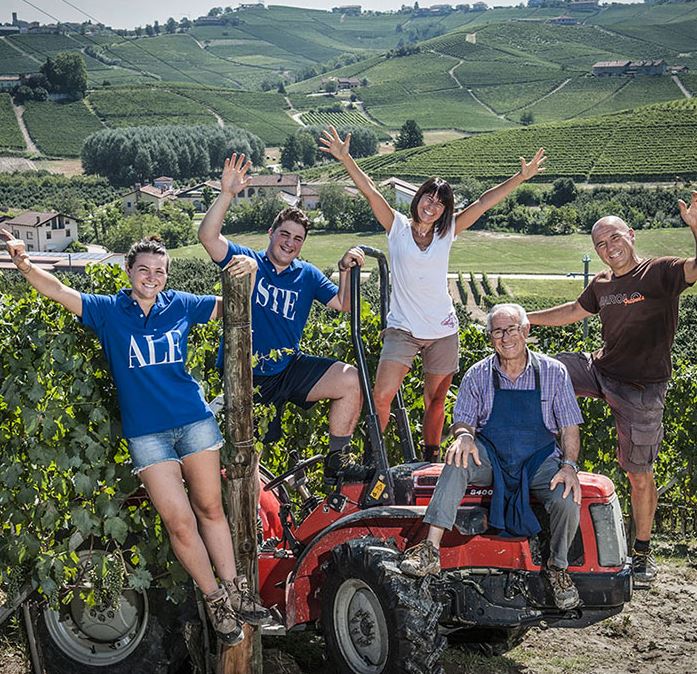
The vineyard is one of the great cru sites in Barolo, synonymous with richness and complexity. Sandrone’s ALESTE Barolo is grown on the soil of Cannubi Boschis, in a specific sub-section of the Cannubi hill. Cannubi extends north from the village of Barolo and has been planted to Nebbiolo on its south and east exposures for at least a century. It runs approximately southwest-northeast and is entirely inside the commune of Barolo, from which it displays the characteristics of wines from this village: profound aromatic complexity and comparatively softer tannins in relation to vines grown in Monforte or Serralunga. The “Boschis” subzone of the Cannubi (also known, historically, as Monghisolfo) is near the northern end of the hill, and is located directly across the little valley from the Sandrone winery building. The Cannubi Boschis subzone has a particularly good exposure to the south and southeast in a small bowl or “conca” that helps hold the warmth in the early morning. Its soils are sea deposits of calcareous clay, not very deep, with good drainage.
WINEMAKING
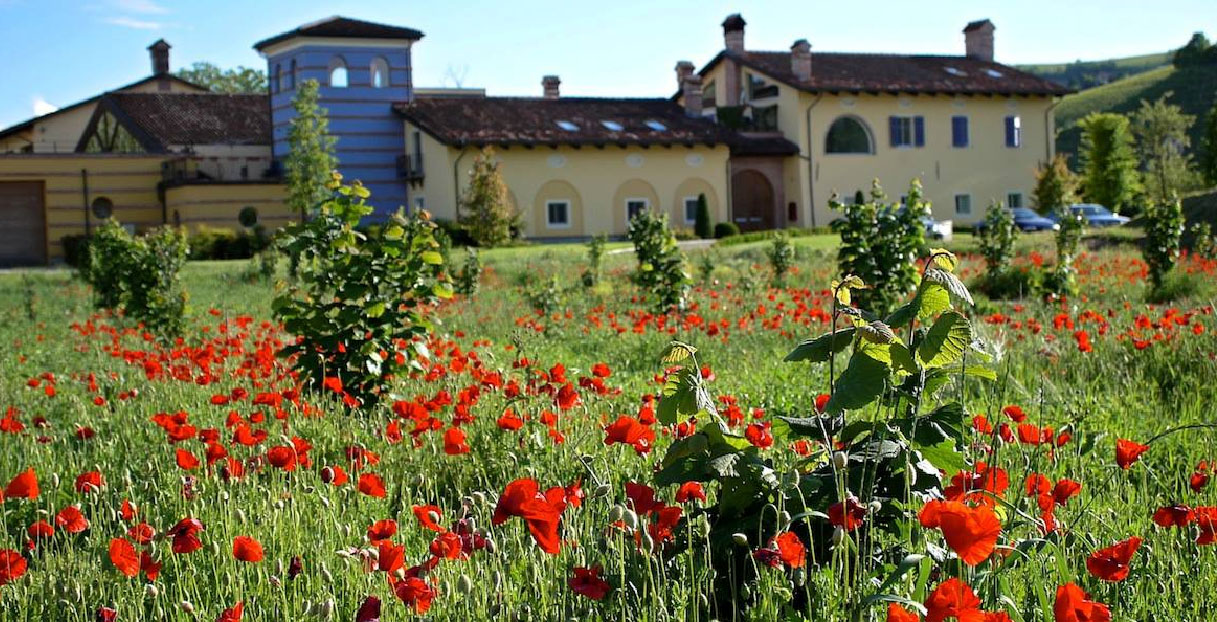
Each lot of the vineyard is vinified separately, and after destemming and light crushing, the must is covered with CO2 for a gentle warm maceration of approximately a day. Alcoholic fermentation begins about 24-36 hours later from native yeasts. A gentle maceration takes place in upright open-top steel tanks for the first 9-10 days of alcoholic fermentation. Immediately after alcoholic fermentation, which takes 28-30 days, malolactic fermentation takes place in 500 liter French oak casks. The wine is aged in these casks for 24 months, followed by 18 months of bottle aging. Around 800 cases are produced in a typical vintage.
VINTAGE
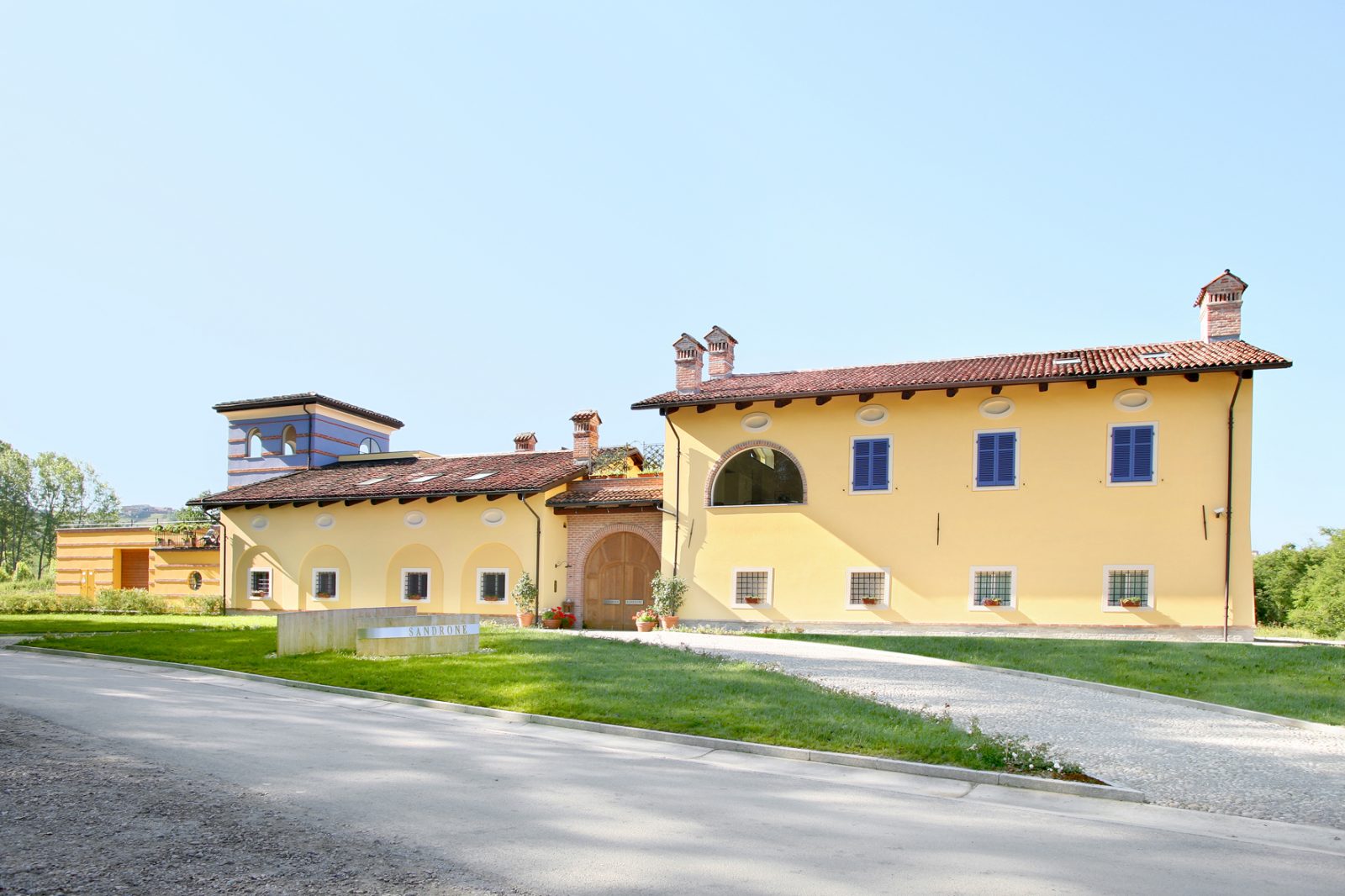
Overall, it was a season characterized by a dual personality: after an initial cool and rainy phase, a second warmer and drier period allowed the fruit to recover strongly and achieve highly satisfying results. Even though the bud break took place during a period characterized by low temperatures and frequent rainfalls, by June the atmospheric conditions had markedly improved, and flowering happened under favorable conditions, resulting in a good fruit set. The true turning point came in July with a period of stable weather. Warm and bright days into October helped the phenolic development. The cool nights of the last period of maturation helped develop the best characteristics of Nebbiolo, thus obtaining grapes of excellent quality. In the end, the vineyard management was demanding, but have certainly made a difference and make the year 2013 a particularly good year. Harvest took place from October 3rd until 24th.
TASTING NOTE
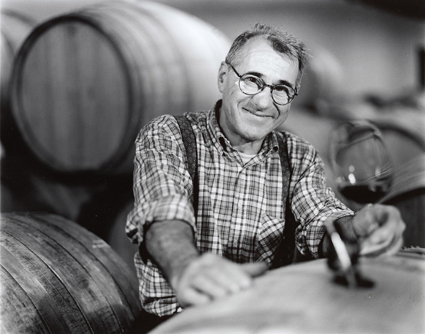
In a cool and classic vintage such as 2013, one would expect a wine of power, austerity and verticality, and while the 2013 Aleste delivers these, there is also a generosity and balance to the wine that is very surprising in the context of the vintage. The nose, while open and generous and full of red cherry and strawberry fruit and flowers, also shows balsamic notes that indicate its growing maturity and complexity. On the palate, the wine shows great lift and expansiveness, with cinnamon, Darmasin plum and black cherry, all framed by the excellent acidity from this cool, classic vintage. The finish has long, developed tannins that linger. The mouthfeel is one of lift and expansiveness, deep and long.
Color
Red
Appellation
Barolo
Farming
Follows organic farming but has chosen not to seek certification. Minimal quantities of Bordeaux mixture and sulfur (as allowed per organic practices) are used to control mold and fungus, and fertilization every 4-6 years occurs with composted manure from dairy cows.
Alcohol
14.5%
Suggested Retail Price
$270
Reviews
- August 11, 2025
Wine Spectator’s Insider Weekly offers early looks at exciting new releases, and the August 6 edition featured Sandrone in a special tribute by senior editor Bruce Sanderson. Honoring the late Luciano Sandrone’s legacy as one of Barolo’s most thoughtful and meticulous winemakers, Sanderson noted the 2021 Barolo Aleste—named for Sandrone’s grandchildren Alessia and Stefano—as “the best to date.” The feature also shared five exceptional new reviews from the iconic estate.
Short review highlights are below, and the full article, tribute, and complete reviews can be viewed HERE:
- Barolo Aleste 2021 – 98 points
Though on the quiet side today, this refined yet powerful Barolo offers layered fruit, mineral, and savory complexity with superb intensity and length. - Barolo Le Vigne 2021 – 96 points
Dense and expressive, balancing ripe fruit with savory notes and assertive, well-integrated tannins. - Barolo Aleste Sibi et Paucis 2015 – 95 points
Mature and harmonious, showing evolved fruit, spice, and earthy nuances with excellent balance. - Barolo Vite Talin 2019 – 95 points
Structured and austere, with dark fruit, graphite, and tar underscored by firm tannins. - Barolo Le Vigne Sibi et Paucis 2015 – 94 points
Elegant and earthy, offering red fruit and mineral notes with a lingering, refined finish.
More on Sandrone ALESTE Barolo ‘Sibi et Paucis’ 2013
Wine Spectator Insider Weekly: Barolo Legend Luciano Sandrone
May 4, 2022 - Wine Spectator’s Insider Weekly offers early looks at exciting new releases, and the August 6 edition featured Sandrone in a special tribute by senior editor Bruce Sanderson. Honoring the late…
Trade Materials
Other Wines by this Producer

Dolcetto d’Alba
Dolcetto d'Alba
Sandrone's Dolcetto d’Alba is produced using Dolcetto grapes from 11 different vineyards, all within the Barolo DOCG. Sandrone’s Dolcetto sees no time in wood and is a remarkably robust and complex example of the variety.

Le Vigne Barolo
Barolo
Le Vigne is a wine created from four different Nebbiolo vineyards, each of which brings its own contribution. This union generates an exceptionally complex wine that is round and harmonious on the palate, with fruity and spicy notes, and this approach of blending together plots is in fact the traditional one in Barolo.
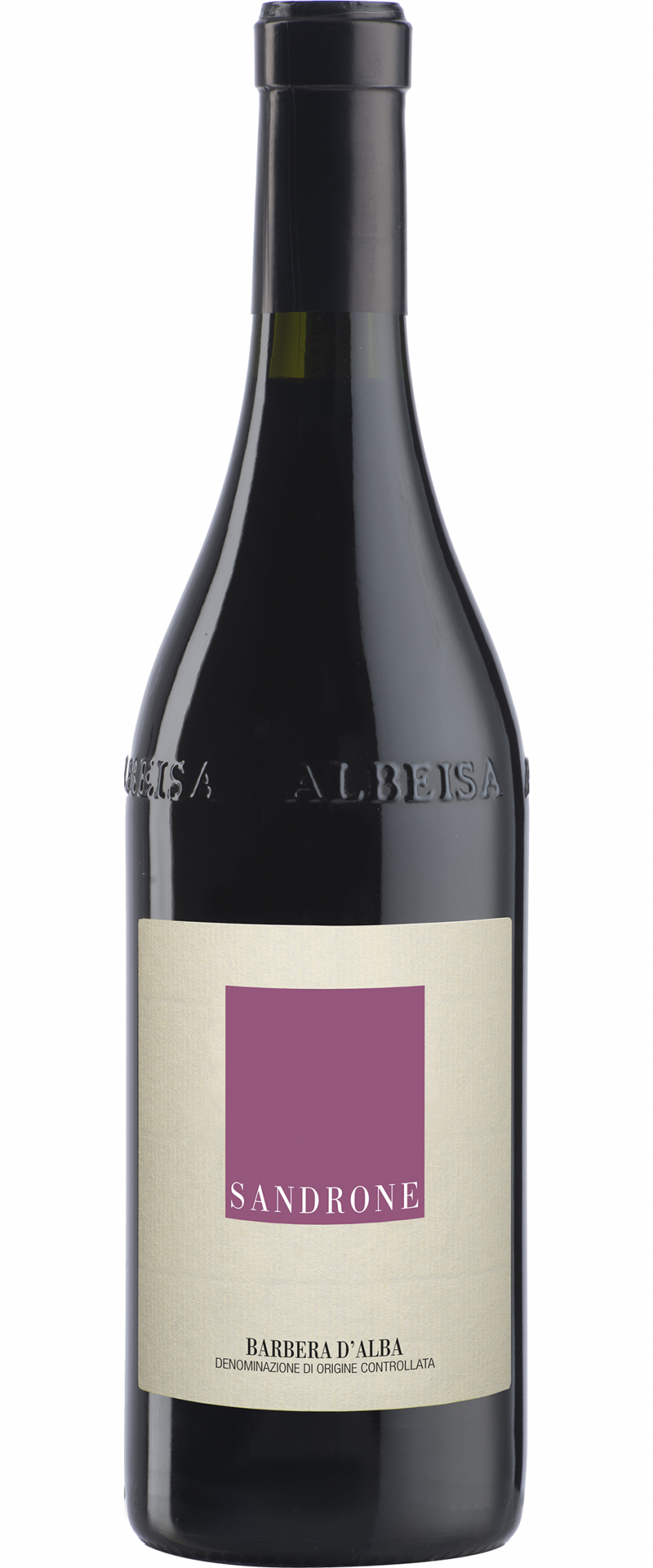
Barbera d’Alba
Barbera d'Alba
The Sandrone Barbera d'Alba comes from three vineyards: Merli and Rocche di San Nicola in Novello, and Cascina Pe Mol in Monforte d’Alba. It is widely considered one of the most intense and complex Barberas produced.

Valmaggiore
Nebbiolo d'Alba
Valmaggiore is the product of Luciano’s incredible passion for the Nebbiolo grape variety and its different expression. Just 15 miles away from Barolo, in the Roero region, Nebbiolo produces a lighter structure and ripe, smooth tannins that are not unlike those of Pinot Noir. This is not a “baby Barolo” or a second wine at all – it is a distinct interpretation of Nebbiolo from a completely distinct geographic zone.
